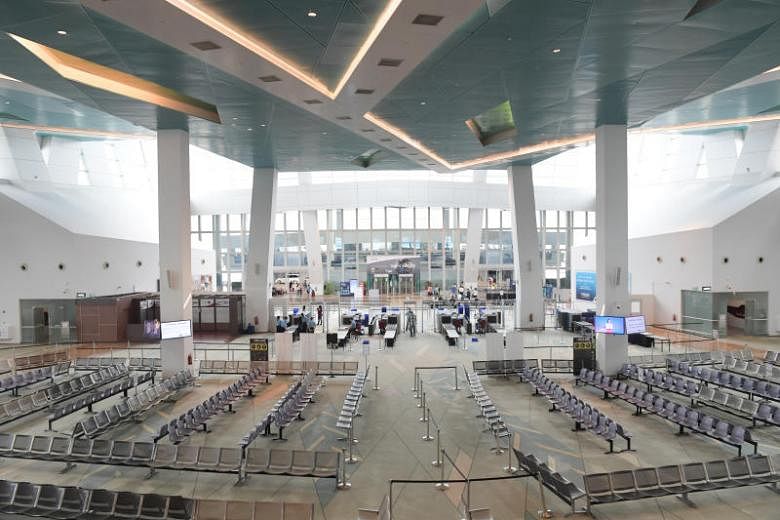SINGAPORE - With passenger numbers at Marina Bay Cruise Centre (MBCC) likely to cross the one-million-passenger mark this financial year, the terminal is taking steps to avoid possible congestion by tapping smart technology.
By September 2019, a total of 460 cameras, each capable of clicking 750 images a second, will be installed at MBCC with sensors fixed at key locations such as the check-in and baggage handling areas.
As passenger numbers increase, the cruise terminal is going high-tech; leveraging technology - data science, video analytics and predictive artificial intelligence - to enhance operations.
"With the number of passengers coming through the terminal, we feel that it is necessary to be proactive to avoid possible congestion, and take measures so that the passenger experience is not compromised," terminal operator Sats-Creuers chief executive Lionel Wong told The Straits Times.
The cruise terminal has been kept busy since its opening in 2012 and is expecting about 1.4 million passengers in the 12 months to March 31, 2019.
The cameras and sensors will provide real-time monitoring of traffic conditions and passenger flows, allowing staff to keep a close eye on operations and detect bottlenecks, if any, at various locations, said Mr Wong.
For example, if the check-in queue is slow-moving, the system will automatically trigger an alert to staff so that they can respond.
In such cases, they may open additional counters or deploy more staff, he said.
"Augmenting our processes with technology will help us manage the increased volume more efficiently and provide a pleasant, seamless travel experience for our passengers," said Mr Wong, who added that the $3 million initiative will make MBCC Asia's first 'smart' terminal.
The system will benefit not just Sats-Creuers staff but also other stakeholders including cruise operators and the Immigration and Checkpoints Authority of Singapore (ICA), he said.
Mr Andrew Tan, chief executive of the Maritime and Port Authority of Singapore (MPA), welcomed the initiative.
The use of smart sensors and data analytics to enhance operations at Singapore's ports and cruise terminal facilities will not only contribute to better operational efficiencies but also enhance the level of security, he said.
This will become more critical as the business grows, experts said.
According to the Singapore Tourism Board (STB), Singapore's two cruise facilities - the other is at HarbourFront - recorded a passenger throughput of 1.38 million in 2017 - marking a third consecutive year of growth.
A recent STB study also found that the cruise industry contributed $706 million in direct spend to Singapore's economy in 2016, an increase of about 36 per cent from 2010.
Globally, the number of cruise passengers has risen by about 50 per cent in the last decade, from 17.8 million to an estimated 27 million in 2018.
Singapore, already the biggest cruise hub in South-east Asia, has further plans to capture an even bigger slice of the growing market.
The Straits Times understands that there are plans to expand the Marina Bay cruise terminal which now has two berths, so that it can handle more ships at one time.



